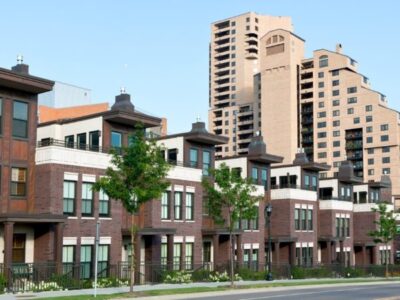California’s severe housing shortage is driving up rents, leaving many lower-income families struggling to stay in neighborhoods they once could afford. That’s not unique; it happens here too. What to do? Read on…
As California Rents Rise, Where to Live Becomes Monthly Guessing Game
The state’s severe housing shortage is driving up rents, leaving many lower-income families struggling to stay in neighborhoods they once could afford.
By Jill Cowan and Robert Gebeloff,
New York Times
Nov. 22, 2019
Excerpts:
Much attention has been focused on the more visible extremes of California’s housing crisis: the $100 million mansions not far from where people live on the streets. But thousands of families are barely hanging on in a housing market that has tipped further and further in favor of homeowners.
As property values rise, the resulting rent increases have forced these tenants to move from home to home, sometimes pushing them into homelessness and often sending them far away from jobs and support networks.
This, experts say, has caused housing shortages to ripple outward from the state’s higher-cost regions, effectively destabilizing the lives of legions of workers who form the base of the state’s economy.
Roughly one in three renters in Los Angeles report spending more than half their income on housing, census data shows.
In Southern California, as the region’s economy grew in the 1970s and 1980s, there was a symbiotic relationship between job growth and home construction. In those decades, the economy created a new housing unit for every three new jobs. The economy slowed down over the following 20 years, but the area still gained nearly a million more new homes.
The recovery from the most recent recession has played out differently. The job market has churned to life, but housing construction has slowed to a trickle. These days only one new housing unit is being built for every eight new jobs, and supply has fallen short of demand.
Home sale prices have risen sharply, and middle-class buyers are snapping up homes in neighborhoods they avoided in the past.
This has pushed many longtime residents — particularly renters — out of black and Latino neighborhoods, even as those who were able to purchase homes decades ago have seen their property values rise.
“What’s causing displacement here in Inglewood is corporate speculation and increased perceptions of desirability,” said D’Artagnan Scorza, a community advocate with the group Uplift Inglewood and a member of the city’s school board.
Real estate has actually appreciated faster in working-class sections of Los Angeles than in the city over-all, an analysis of sales data provided by ATTOM Data Solutions shows. That trend translates into sharp rent increases in those areas.
Homeowners, intentionally or not, benefit from a market in which scarcity is a driving force, which places their interests fundamentally at odds with those of renters. “Over-all, they see greater increases in the value of their own property,” said David Garcia, policy director of the Terner Center for Housing Innovation at UC, Berkeley.
“You have this attitude that high housing costs are a cross that California needs to bear, that it’s just what it means to be California,” said Christopher Thornberg, the founding partner of Beacon Economics, a consulting firm in Los Angeles. “What makes me crazy about that is it flies in the face of what’s happening across the nation. We’re turning California into Country Club California.”
Comment:
Indeed, housing construction has slowed in all the major West Coast cities within the last decade, whilst home prices have been escalating. In Los Angeles, real estate has actually appreciated faster in working-class sections than in the city over-all. That occurrence is not novel to those of us in the Northwest either. Within Portland, formerly deteriorating inner northeast neighborhoods are now rapidly gentrifying; outer southeast neighborhoods are settled by predominately low-income residents occupying low value properties.
And here too, homeowners benefit from a market in which scarcity is a driving force. But in Oregon the inequity takes on a geographic dimension when factoring in property tax implications. Studies have extensively documented that Oregon’s property tax system has dramatically distorted tax burdens. The Northwest Economic Research Center at PSU recently published its report analyzing the effects of an alternative land value tax system.
Household incomes in outer-southeast (OSE) are low compared to inner-northeast (INE); however, the effective tax rate in OSE is generally higher. This inequity could be amended with the introduction of a land value tax. The effects of LVT are two-fold: First, returning to real market values and shifting the tax rates onto land values results in a significantly more balanced effective tax rate distribution; it is also more income progressive. With LVT, the INE properties would be paying property taxes more in line with their rising values, and most OSE properties would pay less.
The second advantage of LVT is the effect of dampening residential land price inflation. “What’s causing displacement in Los Angeles is corporate speculation.” In Portland it is partially corporate – out-of-state consortiums compounding lot purchases and developing up-market housing units. But mostly it’s the widespread expectation of land appreciation that’s responsible for driving up land prices. A high tax rate on land values mitigates against this trend and over time makes housing prices more affordable. Furthermore, a low tax rate on buildings incentivizes building production – increasing the supply of housing.



